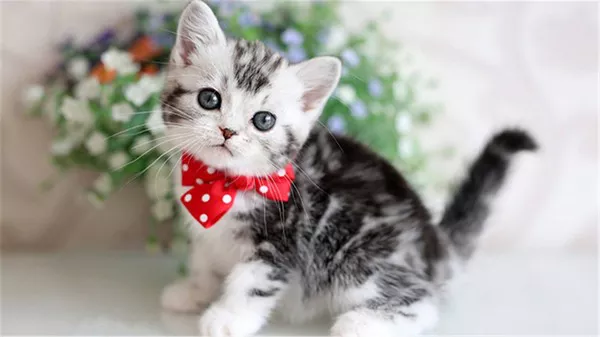The Cornish Rex cat breed stands out among feline enthusiasts for its distinctive appearance and charming personality. With its elegant, slender build and fine, curly coat, the Cornish Rex has captured the hearts of many cat lovers worldwide. Originating from a genetic mutation in the 1950s on a farm in Cornwall, UK, this breed has a fascinating history that led to its unique characteristics and beloved status in the cat fancy world.
Origin Story: The Genetic Mutation
The story of the Cornish Rex begins on a farm in Cornwall, UK, in the early 1950s. A litter of kittens was born to an ordinary farm cat, but among them was a standout: Kallibunker. This cream-colored male kitten had an unusual, fine, and curly coat, unlike any seen before. Kallibunker’s distinctive appearance caught the attention of a local cat breeder, who recognized the potential of this genetic anomaly.
Kallibunker’s unique coat was the result of a spontaneous mutation—a natural variation in the genetic code. This mutation caused his hair follicles to be shaped differently, resulting in the characteristic tight curls of the Cornish Rex breed. Through careful breeding practices, Kallibunker became the founding father of the Cornish Rex lineage.
Breeding and Lineage
After Kallibunker’s discovery, breeders embarked on a breeding program to perpetuate the unique curly coat trait. Initially, Kallibunker was backcrossed with his mother to produce more curly-coated kittens. This selective breeding helped establish the trait within the breed.
In addition to line breeding, breeders also introduced other breeds, such as Siamese cats, to enhance specific traits like long tails and large ears. These efforts aimed to create a well-rounded breed that not only possessed the distinctive coat of the Cornish Rex but also had desirable physical attributes and temperament.
Genetics Behind the Curly Coat
The curly coat of the Cornish Rex is a result of a genetic mutation that affects the structure of the hair follicles. Specifically, it is linked to the lysophosphatidic acid receptor 6 (LPAR6) gene deletion. This mutation alters the shape of the hair shaft, leading to the formation of tight curls. Interestingly, the mutation responsible for the Cornish Rex’s coat differs from that of the Devon Rex, another curly-coated breed, demonstrating the complexity of feline genetics.
Physical Characteristics
The Cornish Rex is known for its striking physical features, which set it apart from other cat breeds. Its most notable attribute is its fine, naturally curly coat, which feels soft and silky to the touch. The coat lacks the typical guard hairs found in other breeds, giving it a unique texture and appearance.
In addition to its curly coat, the Cornish Rex has a slender build, with long, elegant legs and a whip-like tail. Its head is wedge-shaped, with large, oval eyes and large, wide-based ears that contribute to its alert and inquisitive expression. These physical characteristics give the Cornish Rex a distinctive and graceful appearance, earning it the nickname “Greyhound of the cats.”
Temperament and Personality
Beyond its striking appearance, the Cornish Rex is beloved for its playful and sociable nature. These cats are known for their outgoing personalities and love to interact with their human companions. They thrive on attention and enjoy participating in household activities, making them excellent companions for families and individuals alike.
See Also:What Does a Cornish Rex Cost?
Due to their high level of sociability, Cornish Rex cats adapt well to various environments, including homes with children and other pets. They are known for their affectionate nature and enjoy snuggling with their owners, often seeking out warm laps or cozy spots for cuddles. Their soft, velvety coat adds to their appeal, providing comfort and warmth during bonding moments.
Health Considerations
While generally healthy, Cornish Rex cats have specific health considerations that owners should be aware of. Due to their light coat and lack of insulating guard hairs, they are sensitive to low temperatures and may require extra warmth during colder months. Indoor living in warm and dry conditions is recommended to ensure their comfort and well-being.
Additionally, like all breeds, Cornish Rex cats may be prone to certain health issues, including genetic conditions such as hypertrophic cardiomyopathy (HCM), a heart disease that can affect cats. Regular veterinary check-ups and a balanced diet can help mitigate potential health concerns and ensure the long-term health of Cornish Rex cats.
Conclusion
The Cornish Rex cat breed is a testament to the beauty and diversity of the feline world. From its humble beginnings as a farm kitten with a unique coat mutation to its status as a beloved companion animal, the Cornish Rex has captured the hearts of cat lovers around the globe. With its distinctive appearance, playful personality, and affectionate nature, the Cornish Rex continues to enchant and delight cat enthusiasts of all ages.
Related Topics:
























